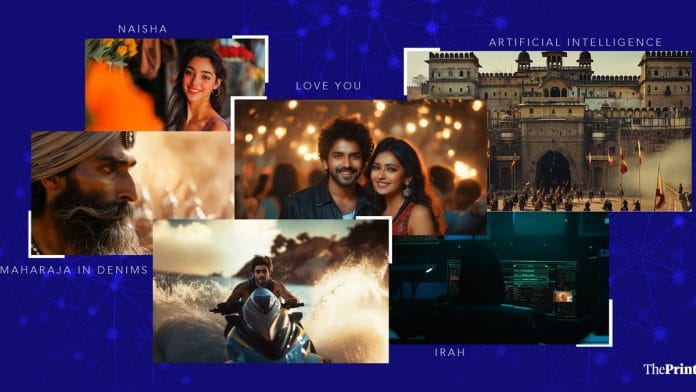New Delhi: A dramatic confrontation with thin air, gazing at a chopper that didn’t exist, reacting to an enemy created by code, performing on empty sets with no physical cues. For actor Rohit Bose Roy, the AI-generated sequences in the 2024 film IRaH demanded every ounce of his imagination.
“Sometimes I’d tell my director, ‘Don’t tell me what’s going to happen—let me feel the moment,’” Roy said, adding that he was stunned when he saw the final cut during dubbing. “It’s crazy how much AI and VFX can transform the film.”
But films like IraH, Kalki 2898 AD, or even Srijit Mukherji’s Oti Uttam, are just a start. Unlike Hollywood, where AI is mostly used for scripts, de-aging, or background visuals, Indian filmmakers are leaping straight to full-throttle prompt-driven production. The upcoming Hindi films Naisha and Maharaja in Denims, along with the Kannada-language Love You, are all vying for the title of India’s first AI-generated feature film. Directors are now using text prompts to plan scenes and sketch out entire films with tools like Midjourney, Luma AI, Runway, and ElevenLabs.
Studios dedicated entirely to AI filmmaking are emerging across the country. Tollywood’s Dil Raju has launched Larven AI Studio. Ajay Devgn has unveiled Prismix. Chandigarh’s Intelliflicks Studios is behind Maharaja in Denims and Mumbai-based Amazing Indian Stories is developing Naisha.
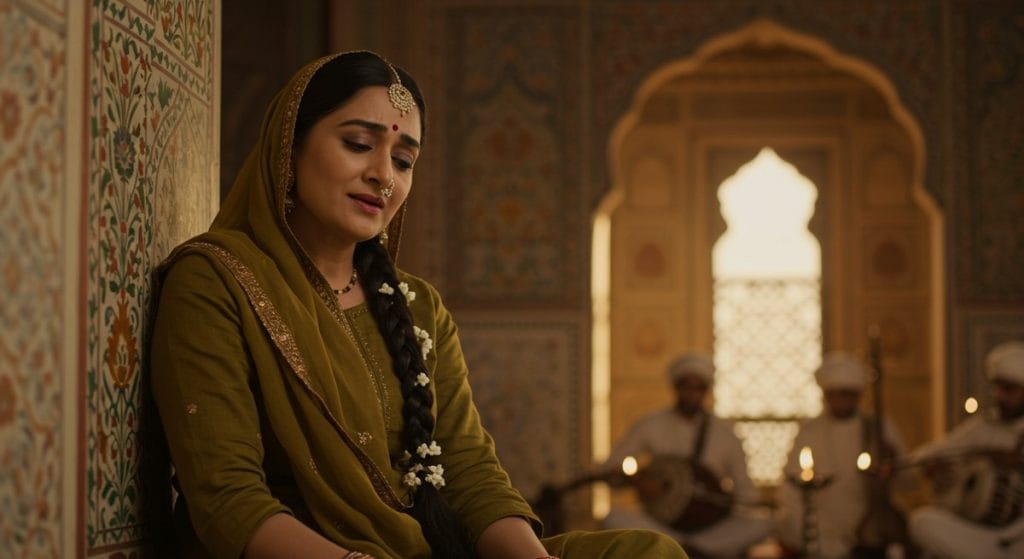
“Our vision is that in the same way anyone can write a poem or a book today, people will be able to tell their story with a movie made with AI,” said Gurdeep Singh Pall, co-founder of Intelliflicks Studios and president of AI Strategy at Qualtrics, a US-based software company.
AI could democratise the expensive business of filmmaking, according to him.
“Filmmaking was traditionally an analog process, limited by physical methods. About 20 years ago, digital cameras and CGI made VFX the go-to for effects that analog couldn’t manage. Now generative AI can handle most digital tasks at a fraction of the cost and time, making filmmaking far more accessible,” he added.
At Cannes 2025, Intelliflicks announced its Hollywood debut with a five-film deal alongside The Conjuring creator Tony DeRosa-Grund. The slate spans supernatural horror to animated spy thrillers. With Maharaja in Denims nearing release, Intelliflicks is positioning India as a serious contender in the AI-filmmaking space.
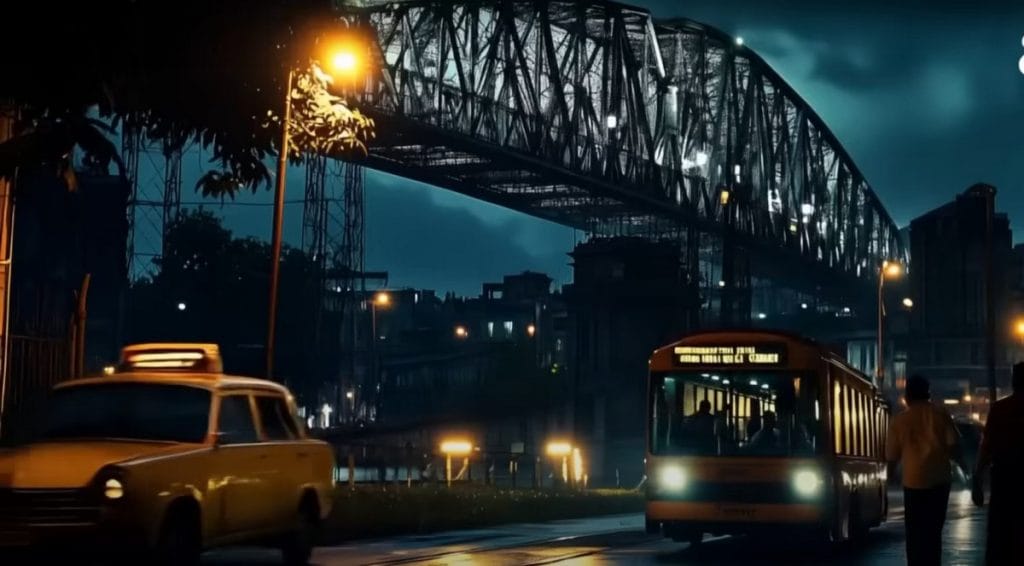
AI isn’t the same as CGI, where artists build digital visuals from scratch, or VFX, which merges those visuals into live-action. It can generate anything from stills to video, voices to faces from text prompts. A filmmaker can type something like “18th-century Jaipur palace with sandstone domes” into Midjourney for concept images. Those can then guide Luma AI to animate videos or build 3D environments. The process still needs human input, but much less of it.
Hollywood has been experimenting for years, though with a lighter touch of late, especially in the wake of protests over AI. The Brutalist and Emilia Pérez, both of which won Oscars this year, used the AI tool Respeecher to alter vocal tones and dialects. Here used de-aging technology from VFX company Metaphysic on Tom Hanks and Robin Wright. In Alien: Romulus, AI was used to resurrect the character Ash from the 1979 original, even though actor Ian Holm had died. Indian productions, meanwhile, are now going all in.
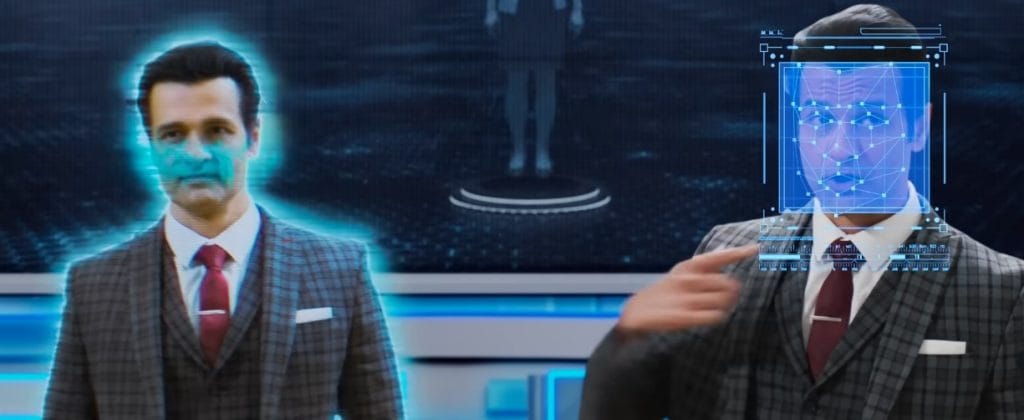
At the World Audio Visual Entertainment Summit (WAVES) 2025, filmmaker Shekhar Kapur declared AI will replace film stars, allowing directors to create and copyright lifelike characters. Even platforms like Pocket FM now use AI for voices and music in their audio stories. But the excitement comes with unease. There are tough questions about job loss, creative control, and whether machine-generated films can capture the heart that drives Bollywood storytelling. Kapur himself experimented with ChatGPT to write the script of the upcoming Masoom 2, but eventually concluded it wasn’t as “creative” as him.
There’s a place for both, according to Naisha director Vivek Anchalia.
“We’re entering an era where human-made work will become premium—just like how handmade goods gained value after the industrial revolution,” he said.
Also Read: Hyderabad’s Annapurna Studios is India’s high-tech film hub. A 50-yr Nagarjuna family legacy
AI goes epic
The trailer of Maharaja in Denims looks every bit like a grand Indian epic, but the uncanny valley is hard to cross. The faces are unmistakably Indian, but they don’t have stories behind their eyes. The palaces have no memories in their walls. The dancers move with grace, but they’ve never practiced. A character jolts awake from a nightmare, but his chest stays still. No heartbeat. No breath. It’s hyper-realistic but not real.
Since 2023, a team of prompt engineers at Intelliflicks has been using tools like Runway, Midjourney, and Stability AI to create the film, which spans a wide sweep of history, from the Afghan-Sikh wars to Partition, the 1984 anti-Sikh riots, and the Mumbai terror attack. According to the South China Morning Post, AI helped bring production costs down to one-sixth of the estimated US$6 million budget it would have taken to make it the traditional way.
Most of the film is AI-generated, although its source material is a book by Khushwant Singh, not to be confused with the late namesake Train to Pakistan author.
Singh, who is the CEO of Intelliflicks Studios, said the goal was to push the limits of AI on screen. The studio has shared teasers and behind-the-scenes glimpses of the project, which is set to release between July and September.
“We’re now at a very interesting stage of realism,” said Singh. “There is so much you can do with AI—you can create massive sets, kings, royals, grandiose visuals.”
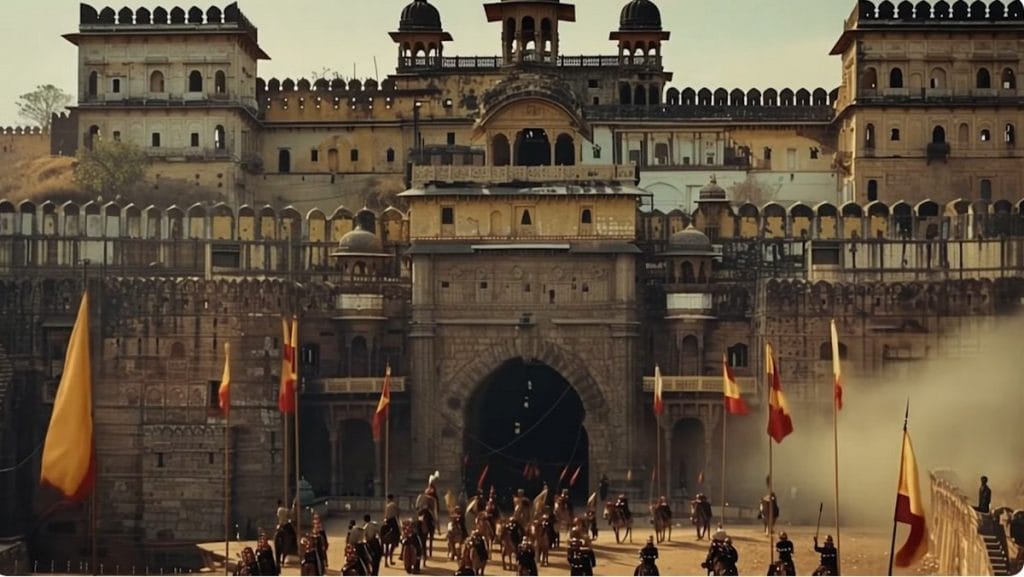
A similar experiment is unfolding with Naisha, so named for its pouty-lipped, blemishless, ageless heroine. The project started as a music video, but escalating costs forced director Vivek Anchalia to pivot to AI. Eventually, the project evolved into a full-length romantic film.
If it had been made the traditional way, the budget could have easily crossed Rs 70 crore, according to Anchalia, “but with AI, we pulled it off for less than 5 per cent of that cost.” Similarly, the Kannada Love You reportedly cost only Rs 10 lakh to make.
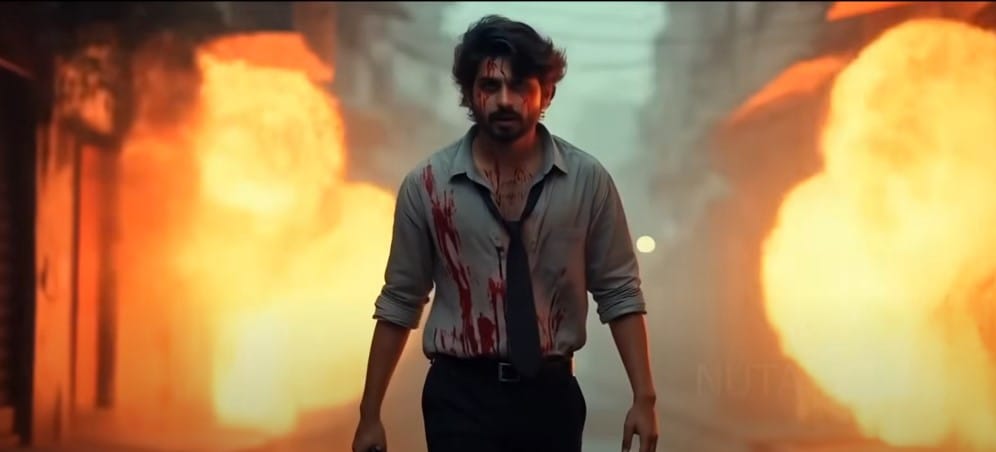
But the shift to long-form storytelling has brought its own hiccups. The tech evolves so fast that completed scenes often need to be redone to keep up.
“Naisha Bose”, the AI-generated lead actress, has already made an appearance in a Kalon jewellery ad, which also featured AI-created music.
“If you look at the ad now compared to the trailer we released earlier, you’ll see the drastic difference. The goal now is to bring Naisha’s visuals in the film up to that standard,” Anchalia told ThePrint.
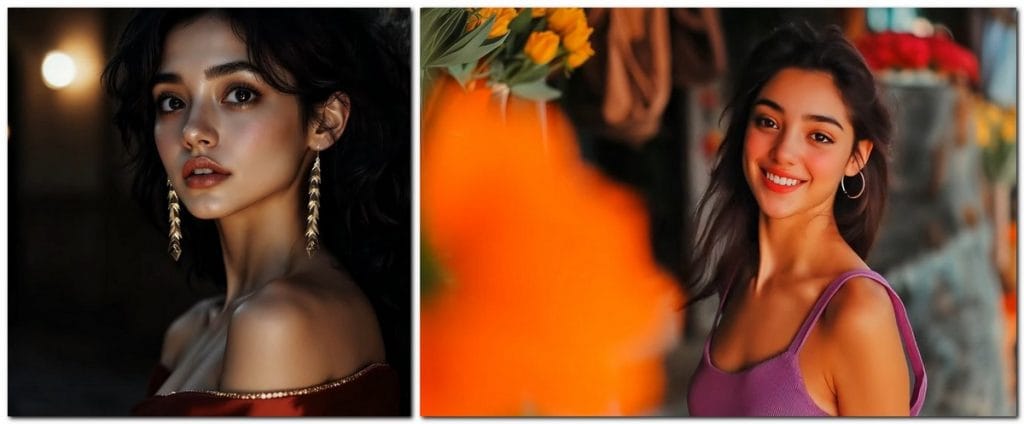
The film is expected to release later this year and a flurry of finishing touches is underway.
“When we have a release date, we have to do a lot of work toward the end to stay updated,” Anchalia said.
In IRaH, released in 2024, around 60 percent of the visuals—especially action scenes—were created using AI and VFX. The AI character IRAH (an anagram of Hira, Roy’s character) plays a central role. He plays both a 22-year-old and a nearly 52-year-old in the film—an age transformation made possible entirely through AI.
“AI should be enhancing a film or a piece of art, adding to the original work. I don’t want AI to take over the work that I’m doing. If it enhances my work, I’m all for it,” 56-year-old Roy said. “AI is a technical assistant. It won’t do anything unless a coder tells it to.”
Machine behind the magic
Naisha Bose’s mother is from Mizoram and her father is from Bengal. Her hunky boyfriend Zain Kapoor is vaguely reminiscent of Vicky Kaushal, or maybe a young Abhay Deol. They dive into azure waters, drive past scenic mountains, smooch in trains, dance in clubs.
These and all other characters in the film were created from scratch using AI, with no real faces or existing images involved, according to Anchalia.
The team fed a stream of prompts—age, ethnicity, body type, hair colour, eye shape—into seven or eight different tools like Midjourney, Luma, and Kring. With each iteration, the characters evolved.

Anchalia and his colleague Harikesh Pawar often worked through the night, often till 5 am, wrestling with prompts to craft that one perfect scene. But after hours of effort, they’d sometimes have to scrap it all. AI actors falter where real ones often shine—they can look flawless but their eyes don’t reflect pain, the body language can be off.
“There was a shot—Zain holding Naisha from behind outside a theatre, both looking ahead. I wanted a precise body movement: he leaves, exits one side, she turns at just the right moment. It was all very deliberate. I spent hours getting the image right, but the video just wouldn’t work. I had to let it go,” Anchalia said.
Most of the footage is AI-generated, but real actors were used for motion capture. Human voice actors filled lead roles, with real composers scoring the music.
But there’s now an AI tool for nearly every step of the filmmaking process—Midjourney for generating detailed images, Runway for video editing, Pika and Luma for video creation, Kring for visual effects, ElevenLabs for lifelike voice generation.

To make Naisha, one software sculpted faces, breathing life into digital flesh. Others worked on bringing emotion in the AI voices, while the rest stitched together entire scenes and sets.
“For images, it’s about how cinematic, realistic, and beautifully composed they are. With video, the focus shifts to body movement, fidelity, and avoiding glitches like morphing or distortion. You also look at how well the software sticks to the prompt—dynamism, camera movement. In audio, the key is voice variety, especially for filler characters, since main roles are voiced by real actors,” Anchalia said.
Still, maintaining character consistency is tricky—faces can change, and geometry can shift mid-scene.
“The biggest hurdle is these models are trained largely on Western aesthetics. Indian faces, especially women, were hard to get right. Had we made a Western film, we would’ve been done at twice the speed,” said Singh. He added that when given prompts for an Indian woman, the AI always defaults to a face with a bindi.
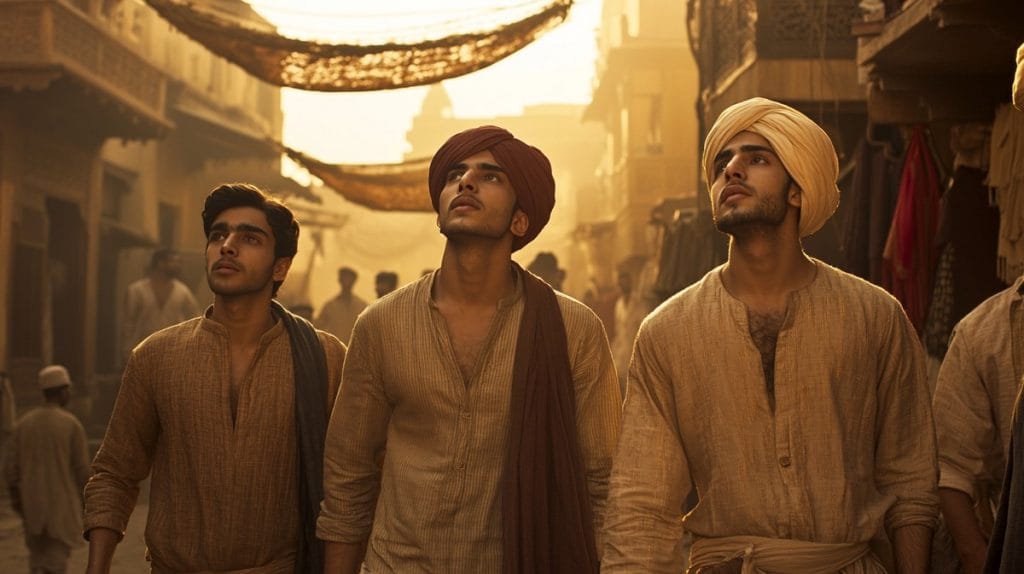
The Maharaja in Denims team works out of a garage in Chandigarh—five to seven people huddled around Apple desktops. The director, co-director, editor, and creative head all test prompts like “Indian male, royal-looking, with a necklace, Sikh turban”. When a “eureka” moment comes, it’s a wrap.
Pall said the film primarily uses Gen AI for visual elements like actors, scenes, motion, and lighting. Other tasks like screenplay, music, and dialogue, however, need more human intervention.
“It’s all trial and error—a test of patience,” Singh said. “This isn’t traditional filmmaking. It’s a whole new medium, a breakthrough. Why compare it? It’s tech, yet it tells stories that feel real. It’s a new kind of cinema.”
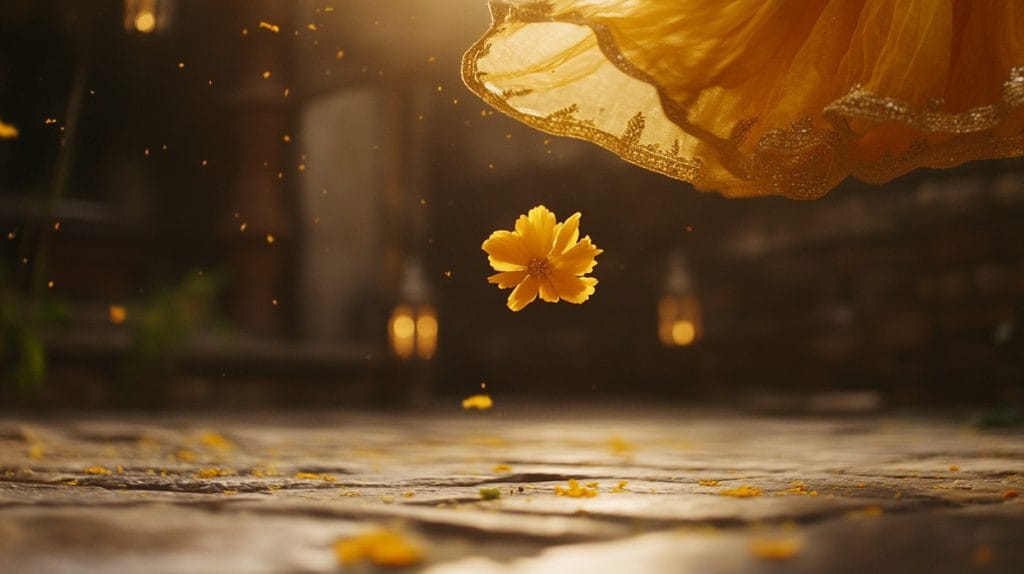
The process isn’t always cheap either. In IRAH, director Sam Bhattacharjee spent over a year on post-production. Without his own in-house VFX and AI setup, costs could have exceeded the film’s full production budget, Roy said. As AI becomes more accessible, however, the cost is likely to come down.
Singh said that the technology brings costs down by 10 times. But it’s not just about saving money.
“You can now attempt projects you’d never have dared to dream of because of budget constraints,” Singh added.
Also Read: Haryana has a bold, new film industry. It’s radical and not all jugaad
Creativity, consent, and control
On the surface, AI looks like a great leveller. Filmmakers can now dream bigger, spend less, and bypass many of the old industry gatekeepers.
“Today, producers stick to safe formulas—spies, RAW, action and crime dramas. AI will allow more risk-taking, more room for diverse ideas,” Anchalia said.
But with this creative revolution come significant ethical concerns.
The AI craze in Hollywood took a Black Mirror-like turn in 2023. Studios began offering background actors one-time fees to scan their faces and use their digital replicas forever, in any project, with no further pay. There was immediate pushback—the Screen Actors Guild-American Federation of Television and Radio Artists (SAG-AFTRA) went on strike and Hollywood ground to a halt.
Since then, US studios have been forced to reckon with new rules around consent, likeness rights, and where the line between man and machine should be drawn.
India hasn’t had such a moment yet. But the same questions are starting to bubble up. AI is already deeply integrated into various stages of filmmaking and old roles are changing. Writers are using ChatGPT to crank out story drafts. Directors are visualising scenes with AI tools. Set designers are crafting virtual sets. Cinematographers are generating lighting references. It’s bionic filmmaking and everyone becomes a set of parts.
For some, a line has to be drawn for the sake of art itself.
“Most Indian films are deeply rooted in emotion and storytelling. Think of something like Dil Chahta Hai—you can’t imagine that being made by AI,” said Rajesh Ramaswamy, an ad filmmaker. “We’re a culture driven by emotion—something machines can’t replicate. AI can enhance parts of the process, but only to a point.”
But Anchalia scoffs at the romanticisation of human abilities.
“In the long term, everybody is replaceable, except the director who gives vision to the film. AI does things better because it is intelligence,” said Anchalia. “We think we’re mystical creatures with emotions and lived experience—but in most jobs, mimicking those things is all that’s required. And AI is very good at mimicking.”
Performers are feeling the heat. Roy said many actors are now trademarking their image and voice, worried about the implications for their work. In 2023, Anil Kapoor won a landmark case protecting his image rights and even his “jhakaas” catchphrase.
“Whether AI is a superhero or supervillain depends on ethics—how we raise it. Both governments and individuals share responsibility,” said Anchalia.
Pall said it’s hard to predict how this will evolve, as much of it depends on cultural readiness.
“We might see stars appear as AI avatars, or a shift toward valuing story and quality over star power, similar to Hollywood,” he added. “Indian audiences embraced shows like Money Heist from Spain, despite the lack of local stars. The same could happen with high-quality, accessible Gen AI content.”
(Edited by Asavari Singh)



